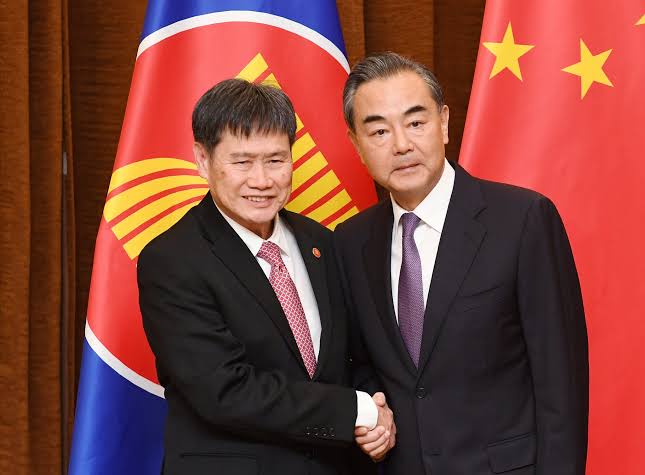
A China and the countries of Association of Southeast Asian Nations (ASEAN) officially signed, this Tuesday (28), the China-ASEAN Free Trade Area (FTA) 3.0 Upgrade Protocolduring a 47th ASEAN Summitheld in Kuala Lumpuralready Malaysia.
The new agreement, published by the newspaper Global Timesbrand an advance in regional economic integration and reinforces the strategic partnership between Asia’s largest emerging economies.
According to the Chinese Ministry of Commerce, the protocol “expands the scope of economic cooperation to nine major areas”, including five new priority axes:
digital economy,
green economy,
supply chain connectivity,
competition and consumer protection,
support for micro, small and medium-sized companies.
The measure represents a decisive step towards a most modern, sustainable and technological free trade areareflecting the joint willingness of China and ASEAN to adapt to changes in the global economy.
Expanding cooperation and regional strengthening
According to the state broadcaster CCTV Newsthe document reflects “the mutual commitment between China and ASEAN to jointly shape international trade rules and deepen collaboration in emerging sectors.”
The parties committed to quickly complete internal approval procedures so that the protocol comes into force “as soon as possible”.
Lin Feng, general director of Department of International Trade and Economic Affairs of the Chinese Ministry of Commerce, stated that the signing “demonstrates the firm commitment of both parties to the multilateralism and free trade”.
“The protocol is an example of joint efforts to oppose unilateralism and protectionism, promote deeper regional economic integration, and build an open, inclusive and rules-based regional market,” declared Lin Feng.
High-quality investments and sustainable growth
Analysts assess that the FTA update occurs at a time of reorganization of global value chains and consolidation of Regional Comprehensive Economic Partnership (RCEP) — the largest trade agreement in the world, bringing together China, ASEAN, Japan, South Korea, Australia and New Zealand.
To Wichai Kinchong Choisenior specialist at Kasikorn Bankfrom Thailand, the Chinese government’s focus on a high quality development has become increasingly evident.
“In Thailand, we have seen that recent Chinese investments are moving towards high-tech, new energy and connectivity sectors, where China has clear advantages in technology and cost efficiency,” Choi told Global Times.
The expert also noted that the higher value-added investments reinforce the market competitiveness and stimulate more sustainable growth in the region.
“The continued opening of the Chinese market, with events such as the China International Import Expo and the International Trade in Services Fair, creates broad opportunities for global and ASEAN companies,” he added.
Second Choi, a China’s new Foreign Investment Law ea gradual liberalization of capital they should increase trust and financial integration between Beijing and Southeast Asian countries.
Origin and expansion of the agreement
O FTA 3.0 Protocol was released in November 2022 and substantially completed in October 2024after two years of multilateral negotiations. It is based on Original China-ASEAN Free Trade Agreementsigned in 2010, and in RCEPimplemented in 2022.
Your goal is expand economic and technological cooperation, harmonize standards and regulations e facilitate regional tradewith special attention to digital innovation, environmental sustainability and productive inclusion.
China and ASEAN remain as largest mutual trading partners for the fifth consecutive year. In the first three quarters of 2025bilateral trade added 5.57 trillion yuan (about US$785 billion)high 9,6% compared to the same period of the previous year, according to the agency Xinhua.
Esse volume equals almost 15% of China’s total trade and reflects the growing interdependence between the economies of East and Southeast Asia.
Defense of multilateralism and resistance to protectionism
The strengthening of the FTA occurs in a context of rising global trade tensions and of fragmentation in international production chains. When announcing the new protocol, ASEAN leaders highlighted the importance of “preserving free trade and regional supply chains” in the face of protectionist policies in other parts of the world.
Lin Feng emphasized that the agreement represents “Asia’s concrete response to the challenge of deglobalization.”
“Strengthening China-ASEAN cooperation reinforces the stability of industrial chains and provides an economic integration model based on cooperation, not rivalry,” he said.
Protocol 3.0, according to Chinese diplomats, will serve as platform for policy coordination in critical areas such as digital economy, cybersecurity and sustainability standardsconsolidating Asia’s role as an axis of global growth.
Regional integration and shared future
The signing of the protocol coincided with the adoption of the Action Plan to Implement the China-ASEAN Comprehensive Strategic Partnership (2026–2030)which aligns with the vision “ASEAN 2045: Our Shared Future”.
The plan establishes long-term goals in infrastructure, green and digital transition, trade facilitation and cultural exchangeconsolidating the pillars of deeper and more sustainable regional integration.
In a joint statement, the countries reaffirmed their commitment to “strengthen political dialogue, increase regional connectivity and promote common prosperity based on multilateral rules”.
The new protocol must therefore raise the level of China-ASEAN cooperation to a 3.0 phasecharacterized by the combination of technological innovation, sustainability and economic opennessconsolidating the block as one of the central drivers of the 21st century global economy.
Source: https://www.ocafezinho.com/2025/10/28/china-e-asean-assinam-protocolo-de-livre-comercio-3-0-e-ampliam-integracao-economica-na-asia/

